The Taipei Zoo yesterday appealed to the public to look for a mother anteater, nicknamed “Hsiao Hung” (小紅, “little red”) who escaped last month, as her caretakers fear for her safety in the wild.
Surveillance cameras showed that the anteater, carrying her baby on her back, escaped early on Sept. 1, making her way past several barriers, climbing over electrical wire fences, swimming across a moat, and scaling metal bars and barricades to flee into the mountains at the rear, Taipei Zoo spokesman Eric Tsao (曹先紹) said yesterday.
The zoo organized a search party and found the baby anteater that afternoon, but not the mother, Tsao said.
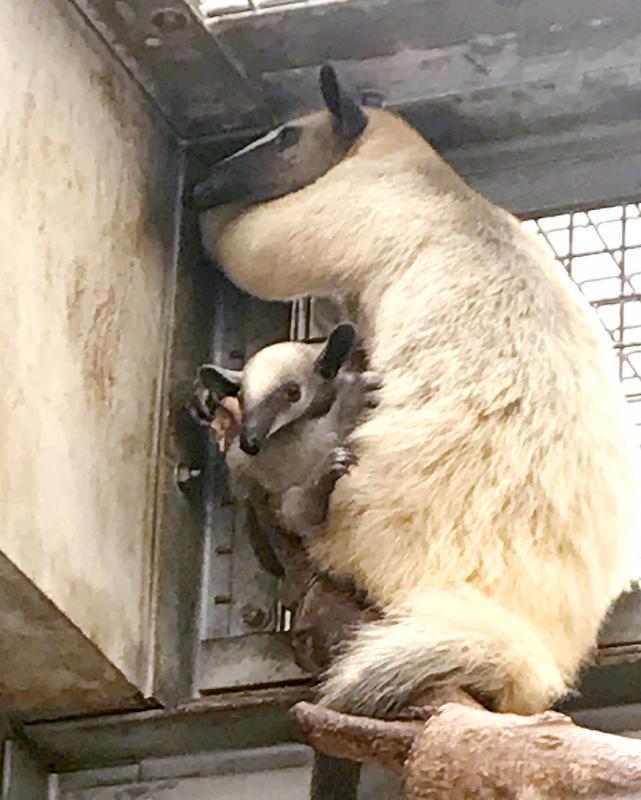
Photo courtesy of Taipei Zoo via CNA
The zoo is appealing to the public to look for Hsiao Hung, as she might be attacked by feral dogs or other wild animals in the mountains, he added.
Hsiao Hung arrived in Taiwan in August 2018, was placed in the zoo’s Tropical Rainforest zone, and after mating with a male anteater, gave birth on May 10.
A southern tamandua species from the rainforests and savannas of South America, Hsiao Hung mainly eats ants, termites an bees, the zoo said.
Anteaters are arboreal in habit and avoid paved roads, so Hsiao Hung is likely still in the mountains, the zoo said, adding that escaped animals tend to stay in forests where they can hide and find food, but this species has poor vision, no teeth, and are unable to defend themselves if attacked by wild animals.
“We have collected her baby’s feces and spread it around to entice her to trace her baby’s scent and come home. We have also installed cage traps with food and infrared cameras, but have yet to catch any pictures of her. If anybody has seen her, please contact us,” Tsao said.
The zoo has had other animals that had escaped in the past, mostly involving Formosan serows, gibbons and chimpanzees, he said.
Gibbons and chimpanzees have sometimes fled outside by swinging from overgrown trees, but these simians are social animals and family-oriented, so they would soon climb back to join their group, he said.
Additional reporting by Jason
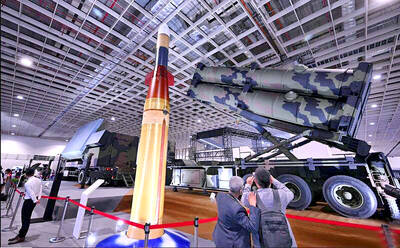
Taiwan is to commence mass production of the Tien Kung (天弓, “Sky Bow”) III, IV and V missiles by the second quarter of this year if the legislature approves the government’s NT$1.25 trillion (US$39.78 billion) special defense budget, an official said yesterday. Commenting on condition of anonymity, a defense official with knowledge of the matter said that the advanced systems are expected to provide crucial capabilities against ballistic and cruise missiles for the proposed “T-Dome,” an advanced, multi-layered air defense network. The Tien Kung III is an air defense missile with a maximum interception altitude of 35km. The Tien Kung IV and V
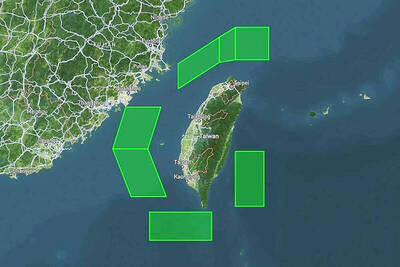
The disruption of 941 flights in and out of Taiwan due to China’s large-scale military exercises was no accident, but rather the result of a “quasi-blockade” used to simulate creating the air and sea routes needed for an amphibious landing, a military expert said. The disruptions occurred on Tuesday and lasted about 10 hours as China conducted live-fire drills in the Taiwan Strait. The Civil Aviation Administration (CAA) said the exercises affected 857 international flights and 84 domestic flights, affecting more than 100,000 travelers. Su Tzu-yun (蘇紫雲), a research fellow at the government-sponsored Institute for National Defense and Security Research, said the air
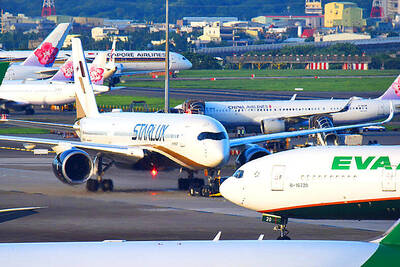
Trips for more than 100,000 international and domestic air travelers could be disrupted as China launches a military exercise around Taiwan today, Taiwan’s Civil Aviation Administration (CAA) said yesterday. The exercise could affect nearly 900 flights scheduled to enter the Taipei Flight Information Region (FIR) during the exercise window, it added. A notice issued by the Chinese Civil Aviation Administration showed there would be seven temporary zones around the Taiwan Strait which would be used for live-fire exercises, lasting from 8am to 6pm today. All aircraft are prohibited from entering during exercise, it says. Taipei FIR has 14 international air routes and
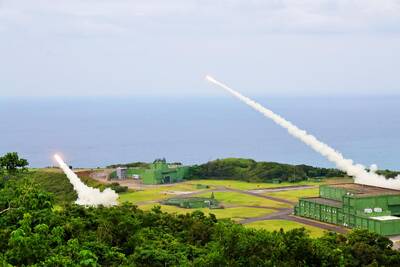
Taiwan lacks effective and cost-efficient armaments to intercept rockets, making the planned “T-Dome” interception system necessary, two experts said on Tuesday. The concerns were raised after China’s military fired two waves of rockets during live-fire drills around Taiwan on Tuesday, part of two-day exercises code-named “Justice Mission 2025.” The first wave involved 17 rockets launched at 9am from Pingtan in China’s Fujian Province, according to Lieutenant General Hsieh Jih-sheng (謝日升) of the Office of the Deputy Chief of the General Staff for Intelligence at the Ministry of National Defense. Those rockets landed 70 nautical miles (129.6km) northeast of Keelung without flying over Taiwan,